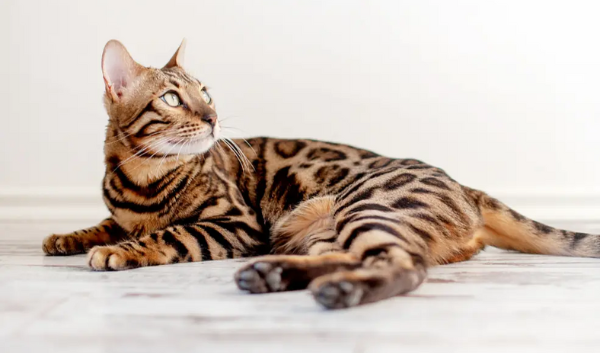Bengal Cat Breed Guide: For NZ Cat Owners
The Bengal cat is the closest you can get to owning a miniature leopard—without sacrificing cuddles for wildness. Known for their athletic builds, stunning rosette or marbled coats, and boundless energy, Bengals are a striking choice for experienced Kiwi cat owners. But make no mistake: these cats are not for the faint-hearted.
This guide offers a complete overview of Bengal ownership in New Zealand—covering behaviour, nutrition, grooming, training, environmental needs, and parasite protection. If you’re considering welcoming a Bengal into your life (or already have one bouncing off your walls), read on.
Breed Origins & History
The Bengal breed was developed in the 1970s by crossing the Asian Leopard Cat with domestic cats (notably Egyptian Maus and Abyssinians). The goal was to create a cat with a wild look but domestic temperament.
Today, Bengals are entirely domesticated but retain their wild aesthetics and some energetic instincts. In New Zealand, Bengals have seen rising popularity among active households and breeders focused on ethical lines. They’re often a choice for owners who want a more interactive, adventurous feline companion.
Bengal Appearance & Physical Traits
Coat: Short, luxurious, and soft to the touch
Markings: Spotted (rosette), marbled, or even glittered
Eyes: Oval, usually green, gold, or hazel
Build: Muscular, sleek, and agile
Tail: Thick and tapering
Weight: 4–7kg on average, though they appear lean
Bengals are athletic cats with a noticeable "spring" in their step. Their wild looks are often the first reason people fall in love with them.
Personality & Temperament
Bengals are high-energy, high-intelligence cats that behave more like a dog in many ways:
- Inquisitive and highly active
- Vocal and expressive
- Enjoy water play, often dipping paws into bowls or jumping in showers
- Strong-willed and sometimes mischievous
- Can form extremely close bonds with owners
They’re not lap cats in the traditional sense but will follow you from room to room and demand attention on their own terms.
Ideal Home Environment
Bengals thrive in environments that challenge their minds and bodies:
- Tall cat trees, window hammocks, and wall-mounted shelves
- Access to outdoor cat enclosures (Catio) or leash walks
- Daily playtime with wand toys, lasers, or interactive games
- Scratching posts and climbing spaces
- Puzzle feeders to simulate hunting behaviour
Without enrichment, Bengals can develop behavioural issues such as aggression, over-grooming, or destructive chewing.
What to Feed a Bengal?
Bengals have high metabolisms and need nutrient-dense, protein-rich diets to maintain energy levels:
Kittens: Pro Plan Kitten Chicken, Feline Natural Lamb & King Salmon
Adults: Ziwi Peak Air-Dried, Royal Canin Bengal Adult, or Raw Essentials (where available)
Treats: Freeze-dried meat or high-protein biscuits
Split meals across 2–3 portions per day, and avoid cheap carb-heavy foods that can lead to bloating or dull coats. A splash of bone broth or wet food can aid hydration.
Grooming & Coat Care
A Bengal's coat may look exotic, but Bengals are fairly low-maintenance:
- Weekly brushing to remove loose fur and reduce shedding
- Occasional bathing (especially if they love water!)
- Nail trimming every 2–3 weeks
- Regular dental care—raw bones or dental treats can help
Despite their wild appearance, Bengals rarely mat and often enjoy grooming as a bonding experience.
Health Considerations
While Bengals are generally healthy, they can be prone to a few breed-specific issues:
- Hypertrophic Cardiomyopathy (HCM): A heart condition—ethical breeders screen for it
- Progressive Retinal Atrophy (PRA): Can lead to vision loss
- Luxating Patella: Occasionally seen in more active lines
- Feline Infectious Peritonitis (FIP): As with all cats, good hygiene and early vaccination help
Schedule yearly vet visits, and always ensure breeders provide health guarantees.
Flea & Worm Treatment
Active and curious by nature, Bengals are at higher risk of exposure to parasites, especially if they access outdoor areas:
Fleas: - Monthly treatment recommended all year - Use Bravecto Spot On for Cats, NexGard Spectra, or Revolution Plus
Worms: - Treat every 3 months - Options include Profender, Endogard, or Milbemax tablets
If your Bengal spends time outdoors or in a Catio, consider more frequent flea checks and year-round coverage.
Training & Mental Stimulation
This is where Bengals shine. Their intelligence makes them easy to train—if you channel their energy correctly:
Clicker training for tricks, target touching, or recall
Leash training for outdoor exploration
Use treat-dispensing toys and tunnels
Hide-and-seek and fetch games
Cat litter training is usually fast and intuitive
Bored Bengals will entertain themselves—with your furniture. Keep their minds occupied.
Gentle, consistent routines work best. Loud or high-energy activities can cause stress.
Socialisation & Interaction
Bengals are incredibly social and do best when they’re actively part of the household:
- Bond closely with owners and often one specific person
- Thrive with routine and daily interaction
- May do well with cat-friendly dogs or other Bengals
- Not recommended for homes with very young or unpredictable children
If you're away often, consider adopting a second pet for company.
Is a Bengal Cat Right for You?
✅ Perfect for active households and experienced cat owners
✅ Intelligent, trainable, and entertaining
✅ Low grooming needs with high visual appeal
❌ Not suitable for first-time owners or quiet, minimalistic homes
Final Thoughts
Bengals aren’t your average housecats—they’re brilliant, energetic, and require more effort than many realise. But if you’re prepared to match their energy and provide daily enrichment, a Bengal will reward you with loyalty, love, and a whole lot of laughs.
From cat food and grooming to training and health care, Pet Supply has everything you need to help your Bengal thrive in the New Zealand environment.

